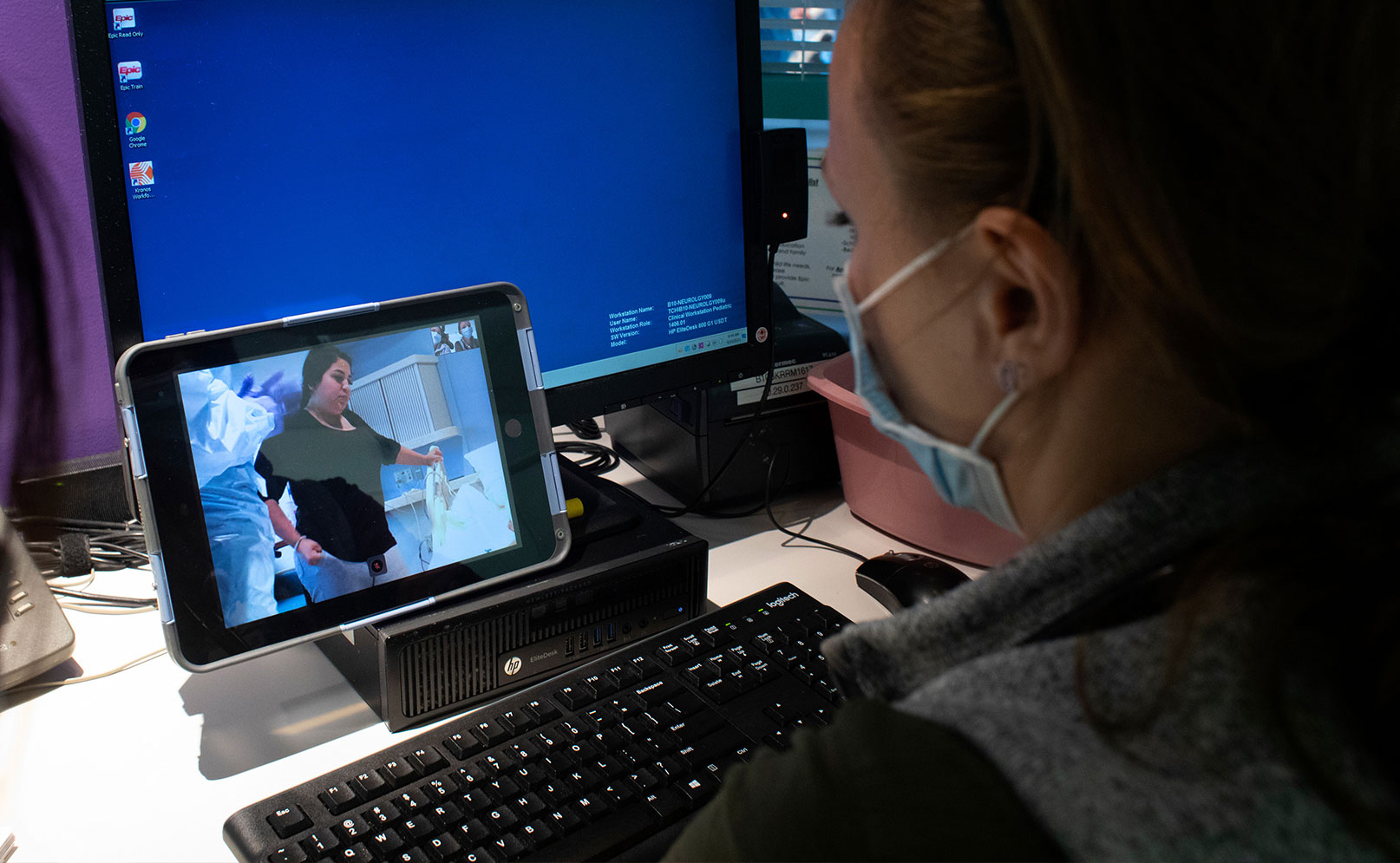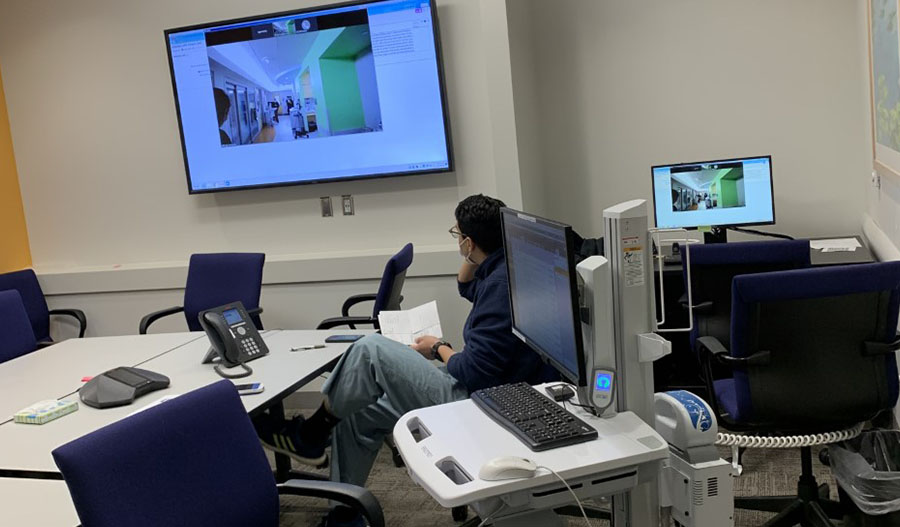

How do you fit a whole medical team, along with a patient’s parents, inside a patient room and still maintain a safe distance between people during a pandemic?
Making daily patient rounds is an important part of making patient care decisions, educating medical students and residents, and communicating with the patient’s family. Complex cases may call for a multidisciplinary team of up to 15 people.
”When the COVID-19 pandemic hit, there was rapid action to dial back how many people are in a patient’s room, to protect ourselves and further protect the parents and the patients,” said Lauren Hess, MD, director of simulation for Pediatric Hospital Medicine at Texas Children's Hospital and assistant professor of pediatrics-hospitalist medicine at Baylor College of Medicine. She also is an Information Services Physician Builder, someone who has training in Information Services and helps to make decisions about technology to improve patient care.
Virtual rounds, or e-rounding, provides a way to retain the benefits of rounding without the dangers of too much closeness.
Pediatric ICU (PICU) faculty Aarti Bavare, MD, MPH, assistant professor of pediatrics-critical care medicine and cardiology at Baylor and co-chair of the Cardiopulmonary Resuscitation Committee at Texas Children’s, and her former colleague, Jordana Goldman, MD, along with the PICU leadership team, including medical, nursing and quality directors, formed a workgroup. The goal was to modify daily bedside clinical rounds to employ social distancing while continuing a patient-centered focus and multidisciplinary engagement.
PICUs and the Cardiac ICU were first to launch virtual rounds at Texas Children’s in April 2020. The PICU virtual rounds workgroup authored an article in Pediatric Critical Care Medicine describing the process. The “hybrid rounds” they developed added a communication platform to the bedside rounds. The PICU used Zoom for several months and then transitioned to VidyoConnect when the latter platform became available. VidyoConnect is a video conferencing platform with enhanced HIPAA-compliance features.
Using hybrid and virtual rounding allows just a few team members and one parent at the patient bedside to share video with others remotely. Team members and families can participate from the hall, a conference room, a clinic, an office or even home.
“It’s much easier to see what everyone is talking about and to contribute to the conversation than if you’re just on the phone. It helps to maintain that social distancing and also helps with work-life balance because we’re able to participate without being in the hospital,” Dr. Hess said.
The PICU leveraged Workstations on Wheels, large computer stations on wheeled carts, which physicians and nurses already used for documentation and for viewing patient records and test results. They can roll the computers from patient to patient in the same hospital unit.
 Thanks to virtual rounding using Workstations on Wheels, pediatric critical care fellow Axel Moreira, MD, can participate from a conference room down the hall.
Thanks to virtual rounding using Workstations on Wheels, pediatric critical care fellow Axel Moreira, MD, can participate from a conference room down the hall.
Because Pediatric Hospital Medicine has patients on different floors all over the hospital, Dr. Hess developed a lighter, more portable system using iPads. She assembled stands that can easily roll from one patient room to another, while attending physicians, fellows or residents carry the iPads.
Virtual rounds can be used for:
“It acts as a tool in our tool belt to continue safe patient care while continuing to teach,” Dr. Hess said.
“My job as the attending is to teach the senior resident how to supervise the intern. My goal is not to talk in the room at all, just to monitor and listen. But when you’re in the room, it’s hard. I’ve found that if I can let the senior resident and the intern be in the room without me, and I’m just there virtually, I’m not going to talk, unless there’s something that I have to change for good patient care. So it allows us to give autonomy to the learners in a way that we couldn’t ever do before,” she said.
“One of the biggest skills that I’m teaching, not only is the medicine, but also the communication. We’re dedicated to teaching them how to communicate with these families in this highly stressful time of their child being admitted to the hospital. That takes practice. If I do all the conversations and answer all the parents’ questions, they’re not going to get that practice.”
According to the article in Pediatric Critical Care Medicine, additional advantages for virtual rounding recorded in surveys by the PICU team included:
Dr. Bavare and Dr. Hess credited e-Health medical director Robert Ball, MD, for supporting development of virtual rounds and expansion to other parts of Texas Children’s.
“We’re not alone at Texas Children’s or Baylor,” Dr. Hess said. “This use of virtual technology is happening across the world. If we can align our operational leaders and physicians not only to help make these decisions, but also to support and provide the hardware and software we need, the opportunities are endless.”
Use of virtual technology in the hospital began to meet needs during the COVID-19 pandemic and may continue because it is so useful.